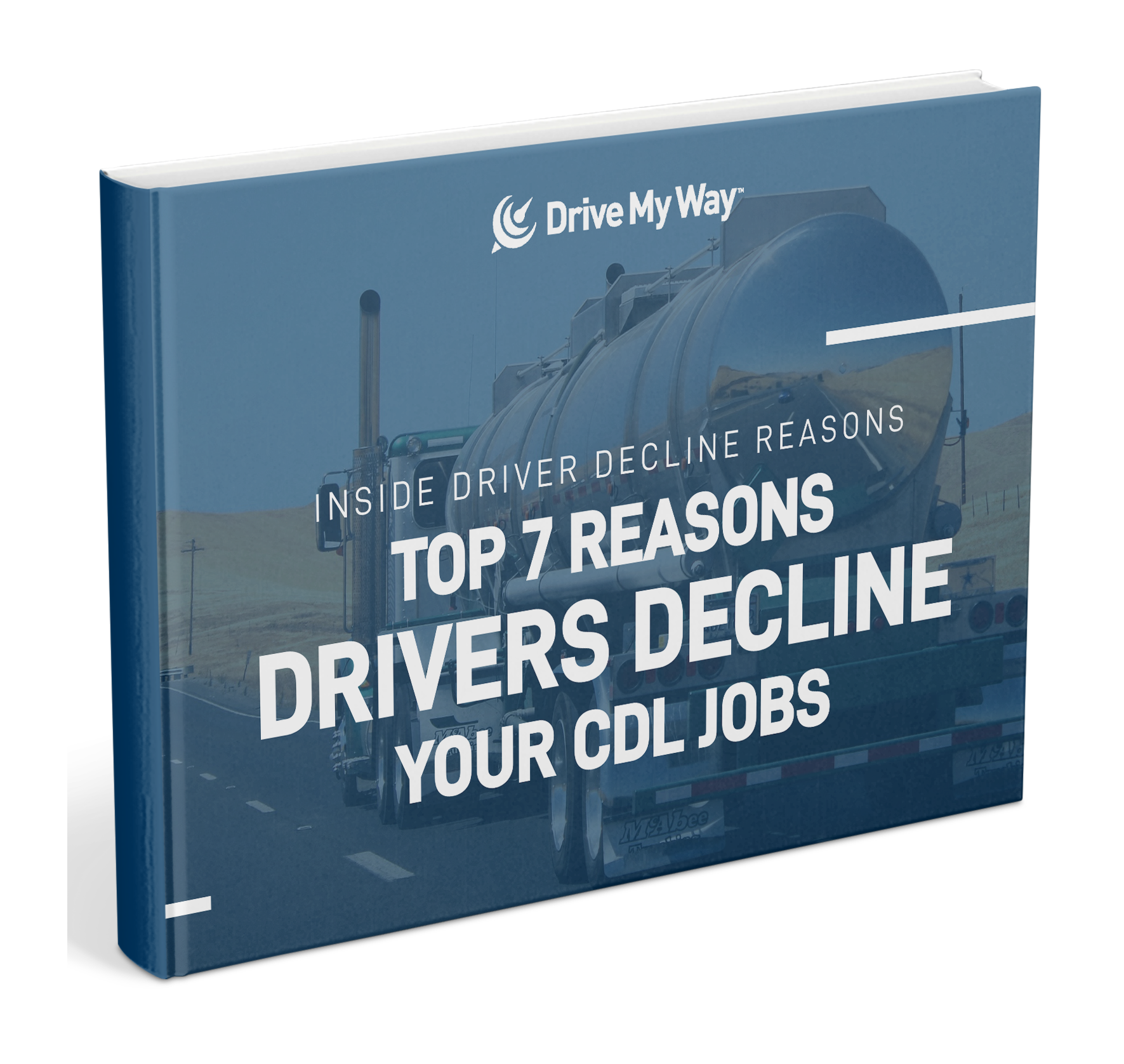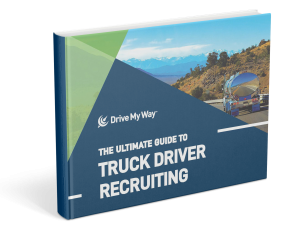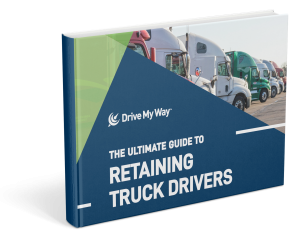
In today’s competitive trucking industry, retaining qualified drivers and attracting top talent are persistent challenges for employers.
One proven strategy to address these challenges is promoting professional development opportunities for drivers. By offering structured career advancement programs, companies can boost driver satisfaction, foster loyalty, and position themselves as desirable employers in the industry.
Keep reading to find out why professional development matters and how trucking companies can integrate it into their operations in 2025.
The Importance of Professional Development in Trucking
For many drivers, the trucking profession is often viewed as a career with limited growth opportunities. This perception can lead to dissatisfaction, high turnover rates, and difficulty in attracting new recruits.
By offering professional development opportunities, you can send a strong message: you value your drivers and are invested in their future.
Professional development also benefits trucking companies in several keyways. First, it significantly enhances driver retention. When drivers feel supported in their career aspirations, they are more likely to remain loyal to their employers.
Second, it helps attract top talent in a highly competitive labor market. Prospective drivers, especially younger candidates, are drawn to companies that prioritize their growth and offer clear pathways for advancement.
Finally, professional development leads to better overall operational efficiency. Well-trained drivers are more likely to adopt safe driving practices, use time-saving technologies effectively, and contribute to a positive company culture.
Additionally, professional development programs help address broader industry challenges, such as the aging workforce and the shortage of qualified drivers. By equipping drivers with advanced skills and preparing them for leadership roles, these programs ensure the sustainability of the trucking industry.
Building Effective Professional Development Programs
Developing a comprehensive professional development program requires thoughtful planning and a commitment to addressing the needs of drivers.
Here are several ways trucking companies can structure these programs to maximize their impact:
- Skills-Based Training Many drivers want to improve their technical abilities, whether by mastering advanced equipment, obtaining certifications (such as HazMat), or becoming proficient with new technologies like electronic logging devices (ELDs). Offering ongoing training in these areas not only enhances drivers’ expertise but also ensures that the company remains compliant with industry regulations and ahead of technological advancements.
- Mentorship Opportunities Experienced drivers possess a wealth of knowledge that can be extremely helpful to new hires. Implementing mentorship programs allows seasoned drivers to pass on their skills, advice, and best practices. Beyond improving technical capabilities, mentorship fosters a sense of camaraderie and support, helping newer drivers feel more connected to the company and their peers.
- Clear Career Pathways One of the most powerful ways to motivate drivers is to provide clear pathways for career advancement. For example, companies can outline how drivers can transition into roles such as driver trainers, safety officers, logistics coordinators, or fleet managers. By demonstrating that trucking can be a long-term career with upward mobility, companies encourage drivers to envision a future with the organization.
- Tuition Reimbursement and Continuing Education Supporting drivers in pursuing additional certifications, skills, or even college degrees can have long-term benefits for both the individual and the company. Tuition reimbursement programs, for instance, enable drivers to enhance their qualifications without worrying about financial strain.
- Recognition and Incentives Recognizing and rewarding professional development milestones is crucial for sustaining motivation. Companies can offer bonuses, certificates, or public acknowledgment for drivers who complete training programs or earn certifications. Such incentives create a culture of growth and reinforce the value of continuous learning.
Steps to Implementing Development Programs
Once you have decided what kind of professional development opportunities are the best fit for your drivers and company, it is important to know how to implement these programs.
- Assess Drivers’ Needs: A successful program begins with understanding what drivers want and need. Conduct surveys, hold focus groups, or have one-on-one discussions to identify specific areas where drivers feel they could benefit from additional training or support.
- Partner with Educational Institutions: Truck driving schools, vocational programs, and training organizations can provide specialized courses tailored to the unique needs of your workforce. Partnering with these institutions ensures high-quality training and access to expert instructors.
- Leverage Technology: Online learning platforms and learning management systems (LMS) make professional development more accessible to drivers, especially those with tight schedules. Tools like Luma Learning LMS allow companies to provide flexible, on-demand training courses that drivers can complete at their own pace.
- Track and Measure Results: It’s important to evaluate the effectiveness of professional development programs. Metrics such as retention rates, job satisfaction scores, and performance improvements can help determine whether these initiatives are achieving their intended goals. Regularly soliciting feedback from drivers can also help refine and improve the programs over time.
- Promote the Program: Let drivers know about the opportunities available to them. Use newsletters, team meetings, or even social media to spread the word about upcoming training sessions, certifications, or career advancement options. Highlight success stories to inspire others to participate.
For more ways to stay ahead of the curve in the transportation industry in 2025, be sure to check out the rest of our Employer Blog posts and connect with us on social media.











 From the moment of onboarding, driver recruiters should be trained to look at recruiting as a long game. Explicitly tell recruiters that the company’s mission is to
From the moment of onboarding, driver recruiters should be trained to look at recruiting as a long game. Explicitly tell recruiters that the company’s mission is to 


 It’s no surprise that pay and benefits are the biggest reason that truck drivers leave one position for another. Carriers are finding that they need to go above and beyond from a compensation and benefits perspective, as offering the industry average simply isn’t cutting it anymore.
It’s no surprise that pay and benefits are the biggest reason that truck drivers leave one position for another. Carriers are finding that they need to go above and beyond from a compensation and benefits perspective, as offering the industry average simply isn’t cutting it anymore. Carriers who over-promise and under-deliver are finding that that model for attracting drivers is no longer solid. Truck drivers have more options than ever before when it comes to which carrier they can drive for, so being honest and transparent are the best things carriers can do during the interview and hiring process if they want to recruit top talent.
Carriers who over-promise and under-deliver are finding that that model for attracting drivers is no longer solid. Truck drivers have more options than ever before when it comes to which carrier they can drive for, so being honest and transparent are the best things carriers can do during the interview and hiring process if they want to recruit top talent.  As the saying goes, employees don’t leave the company. Employees leave the people at the company. If a truck driver finds themselves working with a dispatcher they truly dislike, it won’t be long before they start looking for a different opportunity.
As the saying goes, employees don’t leave the company. Employees leave the people at the company. If a truck driver finds themselves working with a dispatcher they truly dislike, it won’t be long before they start looking for a different opportunity. Comprehensive CDL Recruitment Solutions
Comprehensive CDL Recruitment Solutions
 Now more than ever, the ability for carriers to retain truck drivers is key. As the labor market
Now more than ever, the ability for carriers to retain truck drivers is key. As the labor market The last thing a driver wants is a carrier that over-promises and under-delivers. Before posting a job, carriers should take the time to l
The last thing a driver wants is a carrier that over-promises and under-delivers. Before posting a job, carriers should take the time to l Sometimes it takes a carrier posting a job advertisement on Facebook for them to find out that their current drivers are unsatisfied. Maybe their pay is too low, their benefits aren’t desirable, or the carrier over-promises and under-delivers.
Sometimes it takes a carrier posting a job advertisement on Facebook for them to find out that their current drivers are unsatisfied. Maybe their pay is too low, their benefits aren’t desirable, or the carrier over-promises and under-delivers.  Instead of constantly investing in lofty sign-on bonuses to attract new drivers, carriers should implement referral bonus programs and
Instead of constantly investing in lofty sign-on bonuses to attract new drivers, carriers should implement referral bonus programs and 


